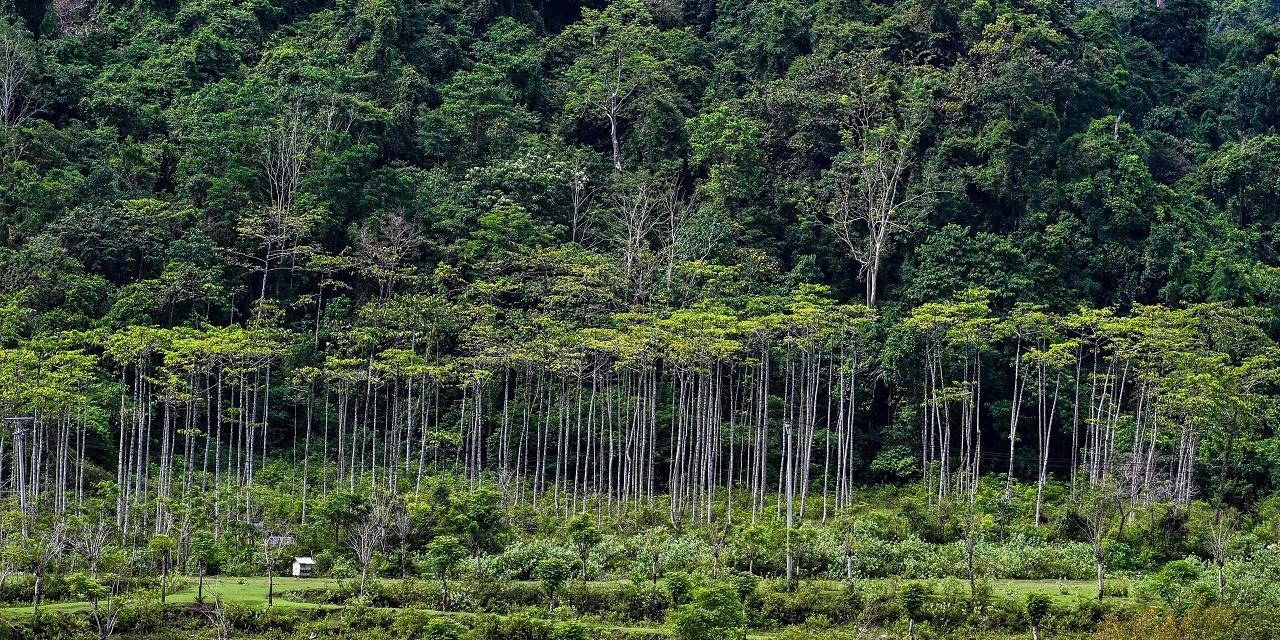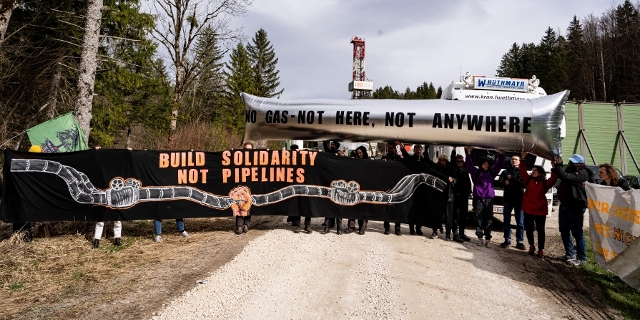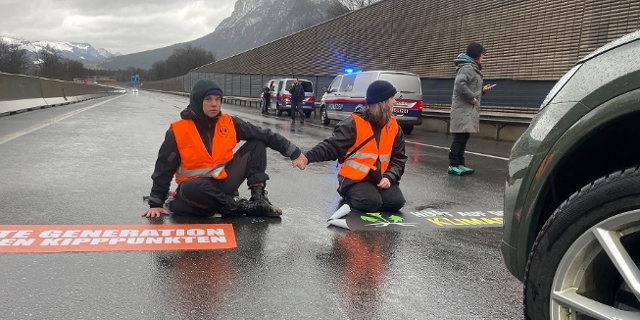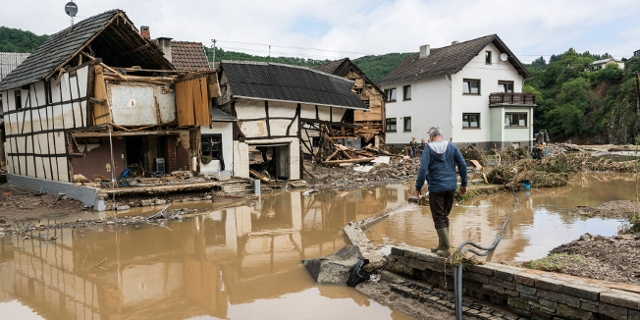May the Forest be with you!
There was some good news this week on the climate front, when the US space agency NASA agreed to extend the GEDI mission. (And yes, it’s pronounced like the Jedi in Star Wars.)
GEDI stands for Global Ecosystem Dynamics Investigation. The mission was launched by NASA in 2018, and since then, a special instrument mounted on the International Space Station has been mapping the world’s forests using laser beams. The project was going to be terminated at the end of this year, but NASA has decided to extend the mission, which is in partnership with the University of Maryland.
We spoke to Dr. Ralph Dubayah, the Principal Investigator for NASA’s GEDI mission.
How big a blow would it have been if NASA’s had not extended the mission?
Ralph Dubayah: If NASA had not extended the mission, I think it would have been a tremendous blow to our ability to be able to understand how changes in forest through deforestation or through the regrowth or affecting atmospheric CO2 in this climate warming. And these are the only data that we have from space that gives us enough information about forests to be able to predict how much carbon are in these forests. So if you cut a forest down or a forest fire goes through them because of climate change or insects and disease, half of the weight of a tree.
It’s biomass is carbon. And so if you burn that tree up, that carbon is going into the atmosphere. Now, there’s lots of other satellite data that you can see images of the Earth, whether it’s on Google Earth or what have you, Landsat or Sentinel, but none of these other data tell you anything about the structure of the forest. It can’t tell you how much the forest weighs, and this is the thing that our instrument does. we’d been waiting 20 years for this mission to get these data. If we were suddenly to lose the only instrument in space that really does this job. It would have been a tremendous blow.
![© NASA The International Space Station [Top] and the Japanese Experiment Module – Exposed Facility [Bottom] where Gedi, highlighted in Gold, is installed](https://tubestatic.orf.at/static/images/site/tube/20230313/iss_jem_diag_combo_v3-1024x903.5994634.jpg)
NASA
The International Space Station [Top] and the Japanese Experiment Module – Exposed Facility [Bottom] where Gedi, highlighted in Gold, is installed
How can this help in the battle to combat global heating?
So when we cut down forests, or we burn them, biomass goes up into the atmosphere as CO2, as carbon, and we don’t know what the impact is of cutting down forests. And when these forests regrow, we don’t know what that balance is between pumping CO2 into the atmosphere and then these regrowing trees pulling it back. So if we don’t have information globally on the carbon content of forests, it’s very difficult to predict what future atmospheric CO2 concentrations will be.
So we’re talking about a cycle.
Yes, we’re talking about the carbon cycle. But for forests in particular, when you cut down a forest and it decays or you burn it, as I said, it releases carbon into the atmosphere. The flipside of that is when you have young, rapidly growing forests, these become what we call carbon sinks because they pull carbon out of the atmosphere. This is what makes trees get fat. They add the carbon to their mass and this is how they grow. So there is a cycle or a balance between deforestation and subsequent regrowth. And one of the ways we can battle climate warming is by planting more trees because we know they will pull out carbon out of the atmosphere, but we must be able to understand where we should plant them and then monitor them through time. How fast are they growing? How much carbon are they accumulating? That’s what the GEDI mission helps with.
Does that mean that this is an ongoing, possibly never ending project of looking at what has happened, what is happening, and therefore how one might plan to take action?
Yes, this should eventually be an ongoing process. Most countries want to participate in climate treaty frameworks, and part of those frameworks state that they have to report out on their carbon emissions, but they may also be able to get credit for their carbon stocks for avoiding deforestation, So we would like to be able to monitor which forests we’re losing,and how much carbon they’ve emitted, as well as giving countries credit for the fact that they may have avoided deforestation or that they have planted trees and these have continued to grow. So we need to be able to look at this balance through time continually for the next 20, 30, 40 years. And so we are putting a lot of emphasis on trying to get these kinds of data from space, because that is the only way we can get transparent, reliable and stable estimates of what is happening to our forests and how they are contributing to helping eliminate or reduce global warming, as well as the added benefit of creating habitat and promoting biodiversity.
Are there any particular high points in terms of what has been achieved so far?
Yes. The Gedi Mission has collected vastly more data on how tall trees are globally and how much carbon they have than we’ve ever had before. so we’ve been able to create a near global map of carbon stocks. And we’ve been able to look at how countries are reporting and check if it matches what we’re actually seeing from space. We’ve also done studies that have shown how important protected areas are, things like national parks or areas that you aren’t allowed to have forestry activities in. And we’ve been able to show that over the last 30 or 40 years. These protected areas have sequestered much more carbon, they have been critical in terms of their role in preserving biomass. In fact, the difference between the protected areas and the non- protected areas is almost equivalent to the total amount of fossil fuel emissions that occur in a year. This is a very important finding that one of our scientists here at the University of Maryland, recently published. These are the kinds of things we’re trying to we’re trying to get at here.
There’s obviously a lot of data analysis involved in this. Can you give us a sense of size of the scientific community that’s actually working on projects under the GEDI Mission?
Gedi is a very important mission. And there is a growing number of scientists using these data.. I don’t have an exact number but it’s certainly in the hundreds. . When I give you a number, like a few hundred or a thousand scientists, that’s just people that we know and papers that they’ve written, but if you look at the download statistics from the data archives, you can see that there is this vast usage of the data, which is very gratifying. And so people recognise the importance of the data and are in fact using it.
How does mapping the world’s forests help with protection of biodiversity?
So one of the main drivers of promoting biodiversity and habitat health has to do with the structure of forests. And what I mean by that is how the leaves and branches are arranged vertically because that provides habitat space. And what we would like to do is relate habitat suitability to the structure of forests. And as we create models for a particular species or a set of species, we can relate these models to the forest structure. If we’re able to map this structure globally, then what we can do is understand which areas are more likely to have high biodiversity. We can target these areas for protection. We can also do habitat restoration, and it is all underpinned by having an idea of what the structure looks like: how tall are the trees? Are there are a lot of branches low down or are the branches high up. What’s the spacing between the trees? All of this creates habitat and niche spaces, so having this information is an important step forward in our ability to protect the biological resources that we have on the planet.
This sounds like a rare piece of very good news when it comes to protecting the planet.
Yes, this is one of the great things I think that’s happened recently in terms of protecting the planet. And the argument we’ve been making, which NASA has aligned itself with, is that we are in a climate crisis. And one of the most important sets of data we have is about forests. NASA’s foresight in saying, yes, this is an important climate mission, we need to keep this going has been, in my mind, a rare victory and is indeed a very good piece of news.
Publiziert am 31.03.2023




















